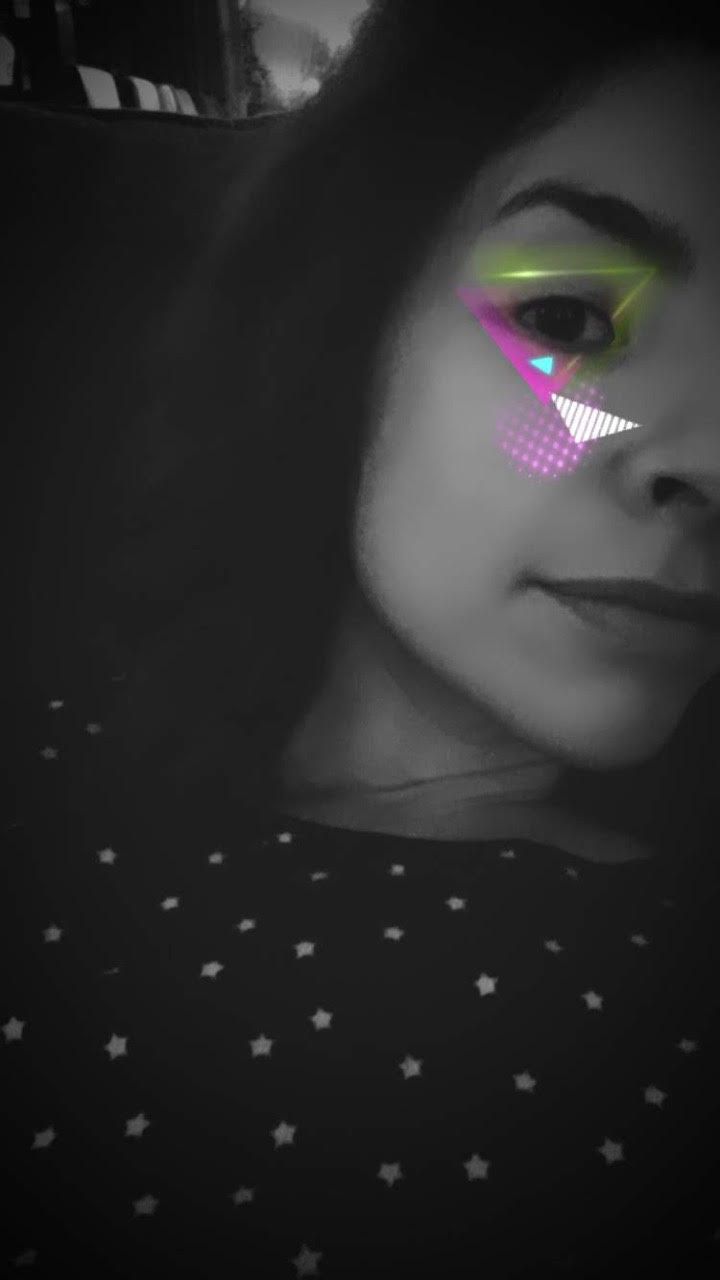
Joss is the founder, showrunner, and design lead of The Time Travel Agency.
She is an artist and designer interested in sociotechnical artifacts, distributed technologies, interactive fiction, and narrative design.
Her curiosity on what invention does to humans and nature led her to start a design studio in Chicago, a consulting practice in Barcelona and Paris, a prototyping studio in the Nordics, and a futures laboratory in Pittsburgh.
She has 15 years of experience in the development of co-creative methods, multistakeholder governance, game design, and lean and innovation processes within the creative, coworking, gaming, and software industries in Webs 2 & 3.
How would you summarize The Time Travel Agency?
I’m Joss and I am the showrunner of The Time Travel Agency. My role at The Time Travel Agency is three-fold: CEO, design lead, and showrunner for the studio (this last one means that I help each of our cases find its story and keep track of that story throughout the project’s development, which is how we keep track of the innovation work).
How I describe The Time Travel Agency depends on whom I talk to! What I usually say is that we are a speculative design and innovation studio where we run experiments in the future.
Sometimes, when I feel the mood and audience are right, I say “The Time Travel Agency is about a time travel service that organizes trips to the future to destinations that its travelers come up with; these destinations are invented, but real things happen when people are traveling, namely that the travelers possess agency in the futures they are discovering”.
At the end of the day, we are a studio where we help to build futures where people feel happy to be alive.
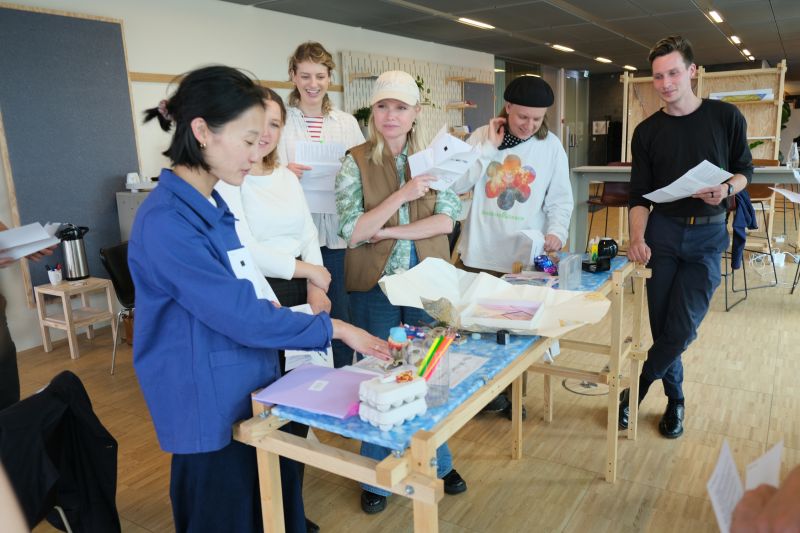
Palindrome at the Danish Design Center, Copenhagen.
Who is behind the projects? How many are you in the studio and what do you do on a daily basis?
We work as a distributed entity in teams. The teams’ composition depends on the stage of discovery, design, or production we’re in. There’s always a lead designer (which is generally myself), a researcher, a scientist, a specialized designer (product, graphic, process, service, etc.), and most of the time a moral philosopher or ethicist. The last piece is our clients, who are also part of the process at every stage.
I would say every project has maybe five people in and out; in the agency there’s about 10 travel agents that appear as needed.
What publics do you work with and why do you work with them? What do they do together?
We work with private and public organizations. Within the public organizations we have cultural or design centers, schools, museums, governments; they want to explore future design with their audiences or run experiments about the future (adapting to change, adopting new tech, including their community as they work).
Then we have private organizations, where we discover their future(s) together. Sometimes they’re preparing to change, or they’ve suddenly grown and need to adjust their vision to accommodate new people, or they want to have an external experimental laboratory for the discovery of new services and products.
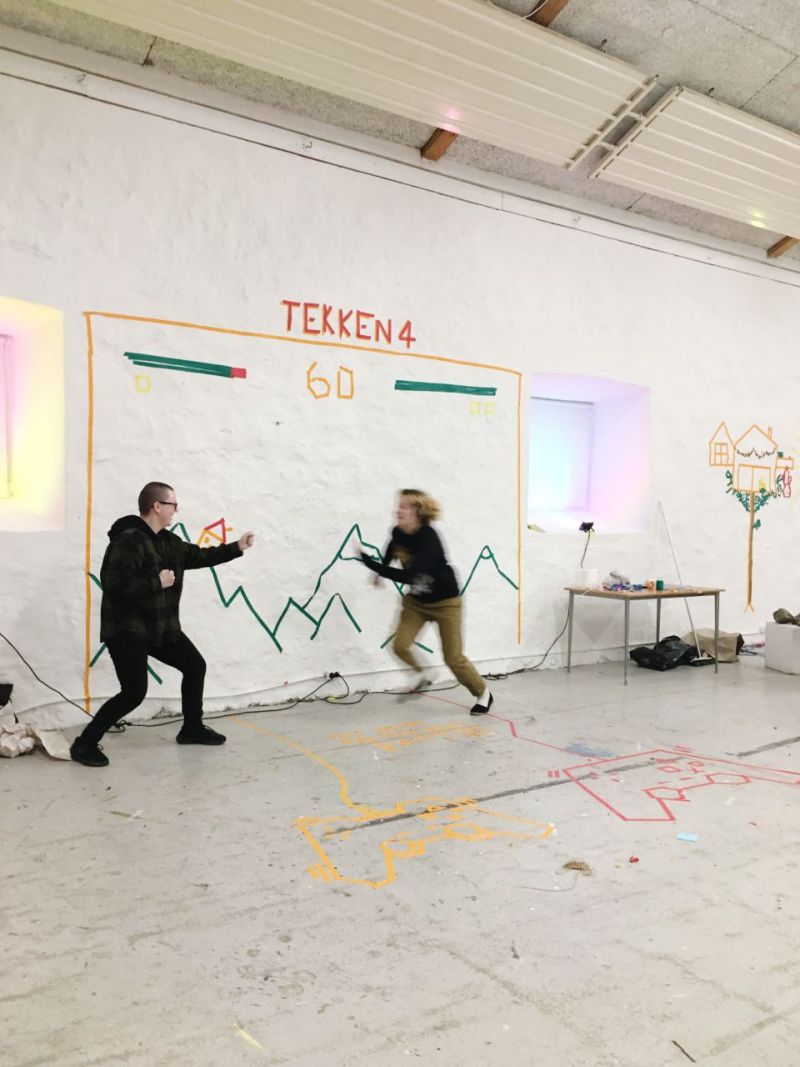
‘Future Headteachers’, Denmark.
How do you work with arts, fiction and narratives? I understand you work with design. Are there any tools that you use and reuse or adapt to the different projects? How does that work?
How we work with art, design, and narrative, that is the hardest question so I hope I can get my point across since this is just text and I can’t use my artifacts to explain!
Basically, stories are at the core of what The Time Travel Agency does. Everything we do has to do with stories and with narrative and with immersing oneself in fiction, and then with immersing other people in those stories as well.
Sometimes I like to confuse people at an early stage and say that stories are “the smallest unit of time travel” because stories are what allows you to go from one point in time to another. Stories are what you hold onto in our universe. Stories are also the first thing we create, and storymaking becomes a skill that people learn in our travels.
Then, fiction is how we immerse people. We design all these games and event scores and processes. Narrative is what holds everything together, and we design narratives as much as we design the stories.
When we work in this stage, we don’t support the idea that there’s a hero’s journey and everything’s only difficult; we stay away from this antiquated way of looking at happenings and possibilities.
One way to work with art, design, and narrative is getting hired to do world building, which we do a lot. Essentially, this is about coming up with stories about worlds, about what happens in these worlds, and about what it feels like to live in these worlds. Agency suddenly appears as an important component to affect this world.
Of course, because we’re in the realm of design, I can say that we do not make art, fiction, or stories for the sake of storymaking. I think the entire travel agency is an attempt at using art to illustrate the inner workings of imagination and storytelling and resiliency, specifically when it comes to the future. I started this studio as a response to hopelessness about the future, and proposed the artistic method as an answer to futures design.
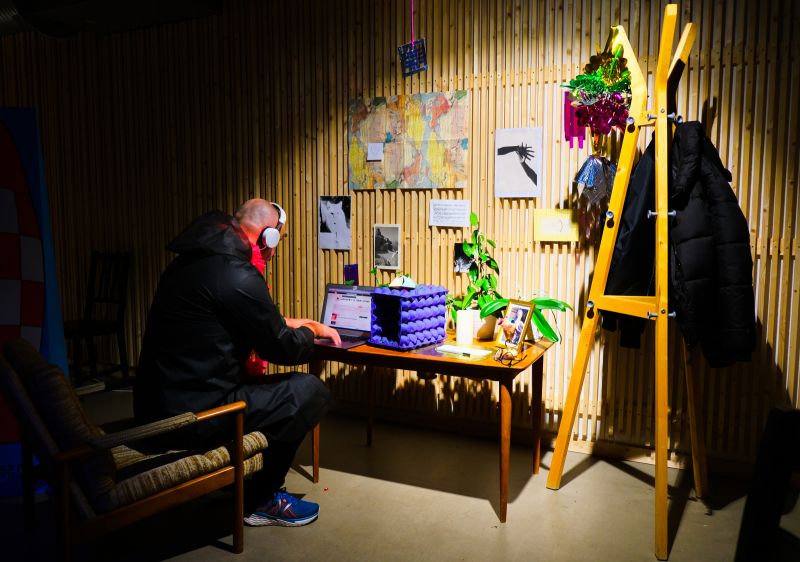
‘Futurofono’, Baltic Artists 2.0 & Musikcentrum Syd
What is the change that you would like these types of projects to produce for the participants? Or for communities or organizations around the world? Is there a transformational intention when you go into these types of projects?
It’s up to the travelers to decide the change they’re after, we just help them to get there. We aren’t even in charge of the destinations they choose. Our process is really like going to a travel agency and asking for a package to explore somewhere else… it’s just that there’s also option X, where you can pick a planet or destination of your own making… in the future.
Our travelers are building capacities in futuremaking, they’re finding their own resiliency, experimenting with hardcore imagination, and even exploring how to become inventors so they can bring that to their organization.
But, if I had to pick what I would like a change to be, I would say that I want the participants to feel happy to be alive today and to feel agency in the futures to come: that they can modify the futures into what they need.
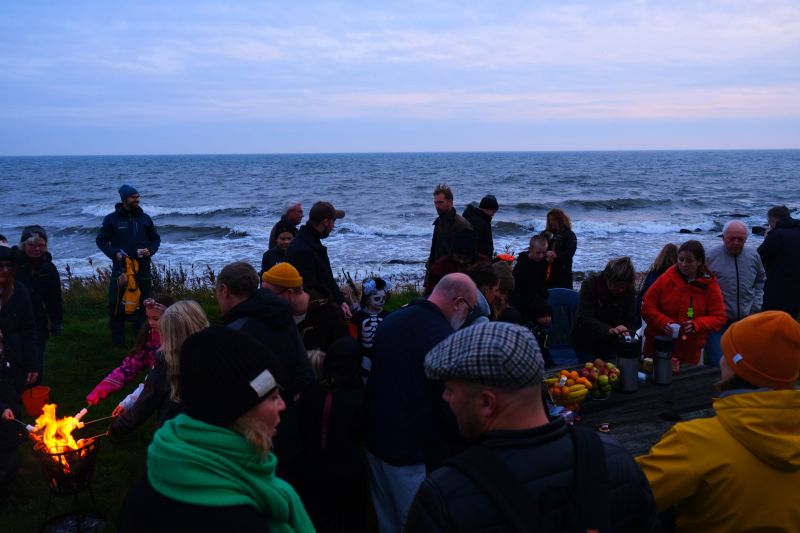
‘Speculative Day of the Dead’, Sweden.
How do you know that you’ve succeeded? Do you guys use any forms of evaluation methods post workshop or post creative practice?
We do have a process that includes evaluation, which is tailored to our clients’ needs. Evaluations are qualitative or quantitative, and it is an effort that designers, scientists, and clients work to define together.
Because we run experiments and during the Discovery stage much of the time, we input metrics in the experiments; at the beginning, we work on setting goals together, adding KPIs, etc.
Still, our clients know that most of the process is qualitative until we get to production.
We do have a type of retrospective template in our projects, which allows us to look at what worked and what didn’t. There is actually one we are publishing during March and April that has to do with our first failed innovation in Sweden. We were the first team to try a blockchain government project, and we were the first team that failed! We and our clients took it pretty well, and we decided to reroute and do a project about failing on that project.
We framed it around the metaphor of a party that didn’t take place. Around the idea that you are planning this great party and then, before all the guests come in, it all has to end.
We called it Someone Blew Up The Balloons and we made a product where we gathered all the elements of a typical party: posters, flyers, a map to the party, the lineup, some confetti…, and turned into a type of map to pick up where we had to end and throw the part of their lifetime. It’s currently in Sweden, available for someone to go and decipher it.
But since you are the first team to do it, how can it be a flop?
Well, we did succeed in being a team ready to explore this area, but we had set the mark further. We were going to be the first team that used public money to explore blockchain technology. My client is an organization that grants funds to make films in Sweden but is part of the government, part of the city of Helsingborg.
We decided that we’d be successful if we launched a pilot, and we weren’t able to. Moreover, if the pilot had been successful, my client was going to make history by transitioning from having 10 grants a year for individuals to nine individual grants and one collective one, decided by a group of people and distributed in such a way that it would be a decentralized effort.
Right before we onboarded participants, lawyers couldn’t justify using city funds, taxpayers’ money, to experiment, since laws of Sweden currently don’t cover liability on this. They couldn’t find a way to change the system or be the first to shake things up. Blockchain has been used for other instances in Sweden, but to use taxpayers’ money to create different funds and give other taxpayers the opportunity to spend their own tax, that has never been done.
In Sweden, taxes are an important source of public financing, so it’s a dangerous place to experiment with breaking a system! We knew this, but after three years of working together, we really thought we were going to push through…. but, the alarm was pulled at the last minute, and we understand why.
Anyway, it was really fun. It was also heartbreaking.
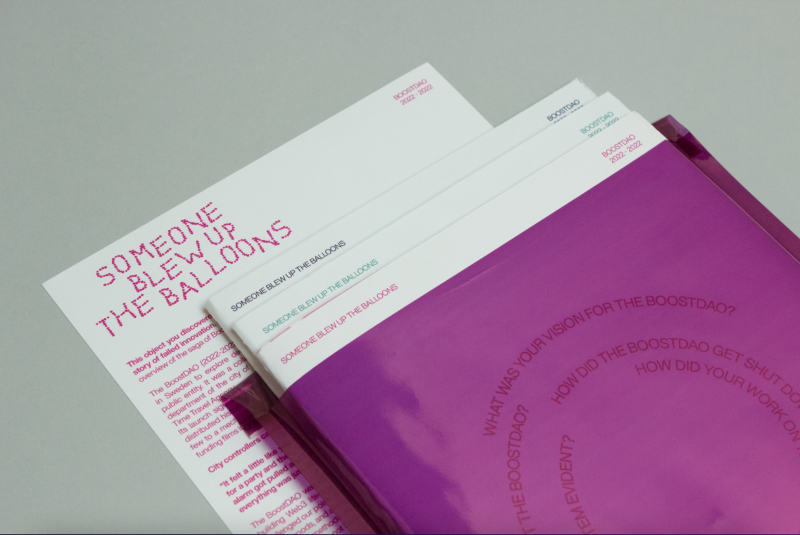
‘Someone Blew Up The Balloons’, Sweden, California, Milan.
During these projects and experimentation, have you formalized any methods or tools? Are they open source? Do you have examples of projects that you find illustrate this really well?
We do have formalized methods that we actually turn into objects because then the process becomes easier for people to grasp. And so, we have Palindrome which is an object that can be played in two directions: if you play it in one direction you do a speculative design process and invent artifacts starting from a few scenarios. If you play it in the other direction, you learn what futures design is by deconstructing artifacts and arriving to stories about them.
In the end, each side feeds the other– you have scenarios because someone deconstructed artifacts, and artifacts because someone made scenarios.
Palindrome has its own universe, for instance there’s a vending machine that dispenses artifacts, we have some AR artifacts that live in our world, and all sorts of weird things. The Palindrome is very much alive and it does a great job at exemplifying our general process.
There is also the Writer’s Game, which is a machine for telling stories that uses a type of chess board, and right now I’m working on a Worldbuilding service–product that allows for the future to be explored.
Each tool and method we use is custom-made for our clients, I guess in that regard we are kind of a boutique studio. The problem with this is that when we invent, this happens in the privacy of a client, so we modify as needed.
In regards to them being open source, they are not open source but they are accessible. Maybe all these tools need us as a facilitator to run them for their original purpose, but we do publish in our newsletter, The Time Travel Transmissions, lots of behind-the-scenes (research, the process of making tools, lessons, etc.) that can be used by other people, and we encourage others to play with our creations.
Your question actually got me thinking that if there’s anyone out there who wants to work on an open source version of the Palindrome, I would be really happy to hear from them. You can email us at joining@thetimetravel.agency
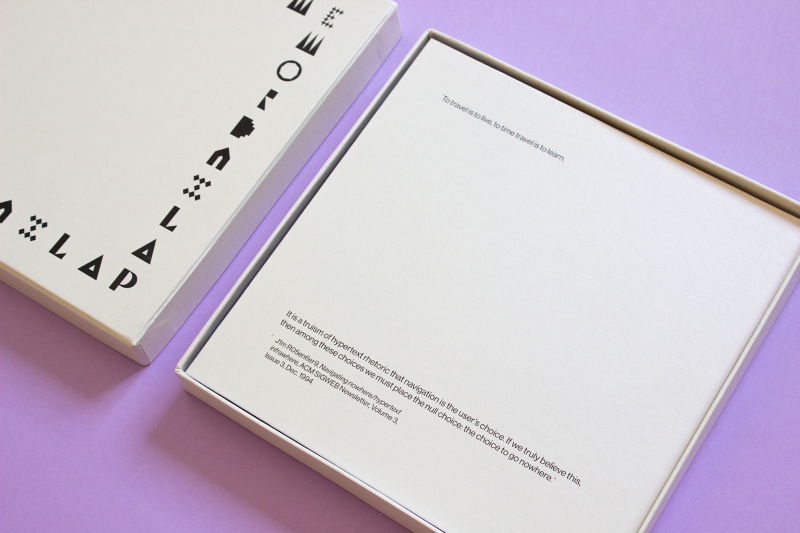
‘Palindrome’, Denmark, Helsinki.
Do you have any references that you’d like to share? It can be either one project a reference, another thing that you’ve already conducted that’s kind of living with you.
I do think of a universe often, which inspires me because of its physics and humor and mix of American and Latin cultures, plus the queerness of the show. It’s a show called “Los Espookys”, it is a sort of Latin Scooby Doo in a freaky universe. My mind kind of works like this. In my mind things can just appear and you accept them, and you can watch TV in a mirror, and the moon has a special sense of humor.
Also, there’s a podcast that we listen to about the lives of objects called “Everything Is Alive”. It really helps us in our method because we always have to think about what the creations are experiencing in the world we’re suddenly placing them in. What do they see? What do they feel? Inhabiting objects is really important for us.
There is a show that I like a lot called “Halt and Catch Fire” that I think does an excellent job at putting the spotlight on the spirit of innovation. There is a Canadian film called “Dim The Fluorescents” about what it feels like to make art and design together.
There’s a weird book by Italo Calvino called “If On a Winter’s Night A Traveler”, and I think that understanding that book (because to me it’s basically a narrative design book), is to understand how it feels like to travel with us, to ride the wave that is our process, where you’re constantly seeing what is happening and seeing that it is happening and seeing as it is happening. The first chapter is a person reading a book, and the second chapter is a person reading about somebody reading a book. And the third chapter is what happens to the first person reading the book. And then the fourth one is about the reader, maybe. And suddenly you’re in a story but you’re also a story yourself.
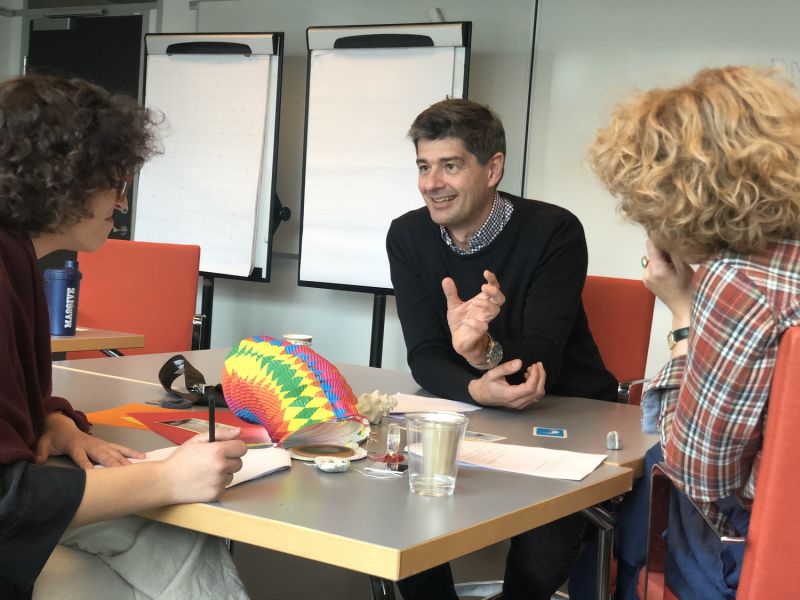
‘Intended Collaborations 2048’, Denmark.
Interview conducted by Chloé Luchs.